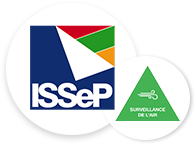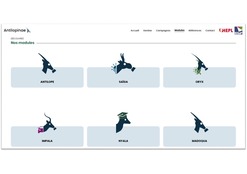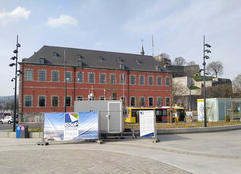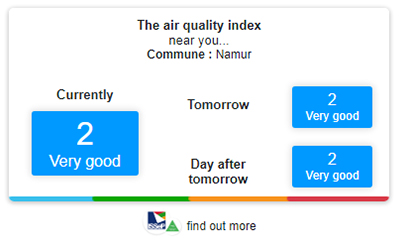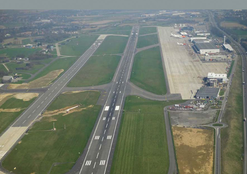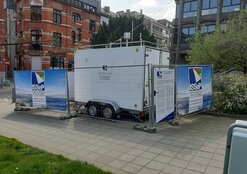Ozone (O3) is an ambient air pollutant and is therefore found in the troposphere (i.e. in the lower layers of our atmosphere). The tropospheric ozone, therefore, does not come from the famous ozone layer that is located at high altitude (between 15 and 30 km) in the part called the stratosphere.
This secondary pollutant (i.e. one which is not emitted directly into the atmosphere but formed from other pollutants) is closely linked to the action of solar radiation and the presence of other components dubbed "ozone precursors", such as nitrogen oxides (NOx) and volatile organic compounds (VOCs).
At relatively high concentrations, this compound, which is very reactive, has, in addition to harmful effects on health (i.e. decrease in pulmonary function, inflammatory reaction of the respiratory tract, etc.), negative effects on plant production (i.e. necrosis on the surface of leaves, reduction of photosynthesis, etc.) and the yield of agricultural crops (especially in southern European countries, for example). For the latter sector, it can be a real scourge...
As a result, with global warming causing hotter and sunnier summers, this pollutant remains problematic in Europe. The ozone thus remains the main pollutant during the summer but, with the coming autumn and winter, measured concentrations will decrease significantly, and this pollution will become less problematic.
To learn more about the ozone, you can read the specific article in the "Learn more" menu.
Did you know?
In rural areas (countryside), more ozone is usually measured than in urban areas. In fact, in the countryside, nitric oxide (NO) emissions are lower because road traffic is lower, and NO is a gas that destroys the ozone. That is why, in some cases, we might notice that the ozone concentration is slightly less significant along main roads (e.g. motorways). For the same reasons, there is generally more ozone in the city on weekends (when traffic is lower) than on weekdays.
An increase in ozone concentrations was also observed in spring 2020, during the lockdown period.
Ozone pollution as of 16 September 2020. An exceptional situation?
Along with the scorching temperatures of mid-September, ozone pollution developed, so that on 16 September 2020, the European Information threshold (180 µg/m³ in hourly value) was exceeded by 6 measurement points in Wallonia (Eupen, Vielsalm, Sinsin, Dourbes, Sainte-Ode and Offagne).
Exceeding the information threshold in September is extremely rare. Thus, over the last 30 years of measurement, exceedances were only recorded in September 2003 (the year of all ozone records). These took place in Eupen on 18 September 2003 and in Vielsalm on 20 September 2003. The exceedances of 16 September 2020 are therefore not the latest that we have known. On the other hand, what is exceptional is the number of stations affected.
Finally, it is estimated that between 1% and 2% of the Walloon population will have been exposed to concentrations exceeding the Information threshold (180 µg/m³ in hourly value). We are very far from the situation encountered during the heatwave of August 2020 when up to 54% of the Walloon population (on 12/08) was exposed to concentrations exceeding the Information threshold.
In this regard, Sciensano published (on 04/09/2020) a press release relating to the increase in excess mortality during the heatwave of August 2020. This press release is available on the website: Sciensano.be
